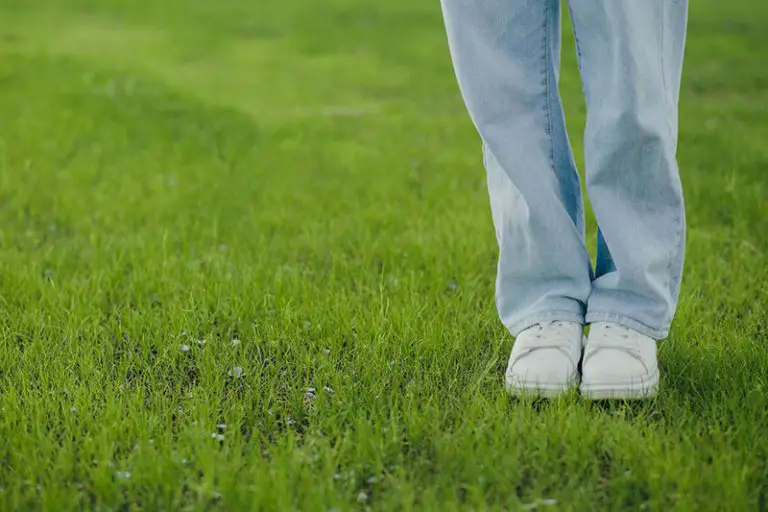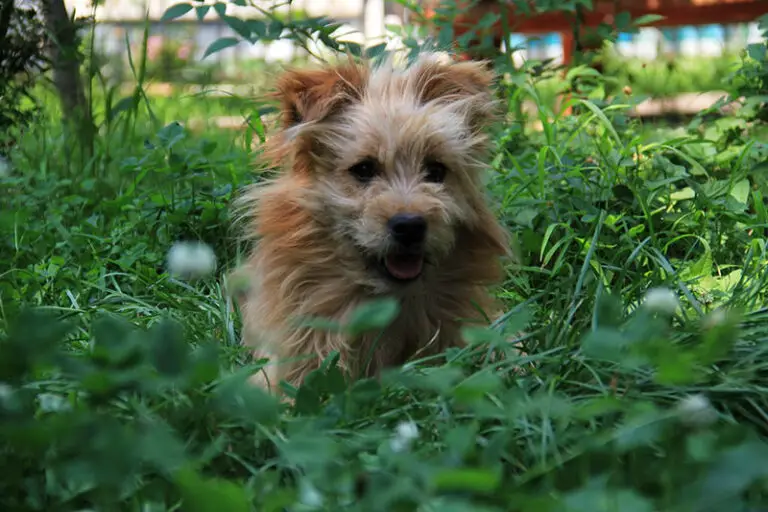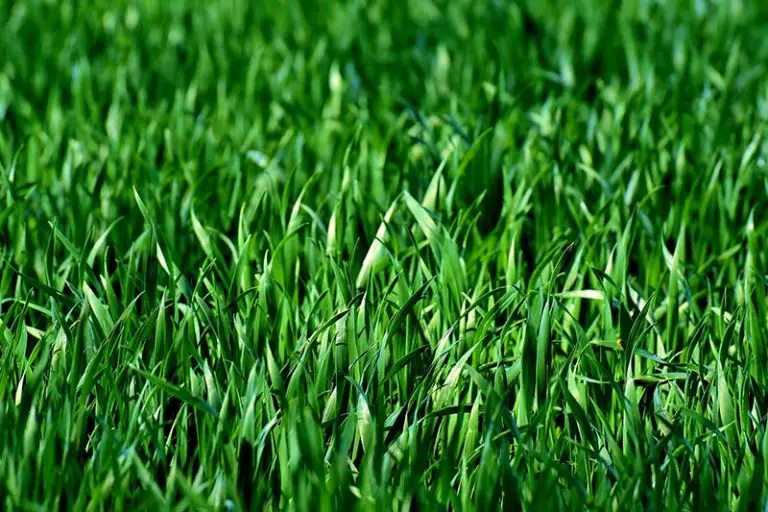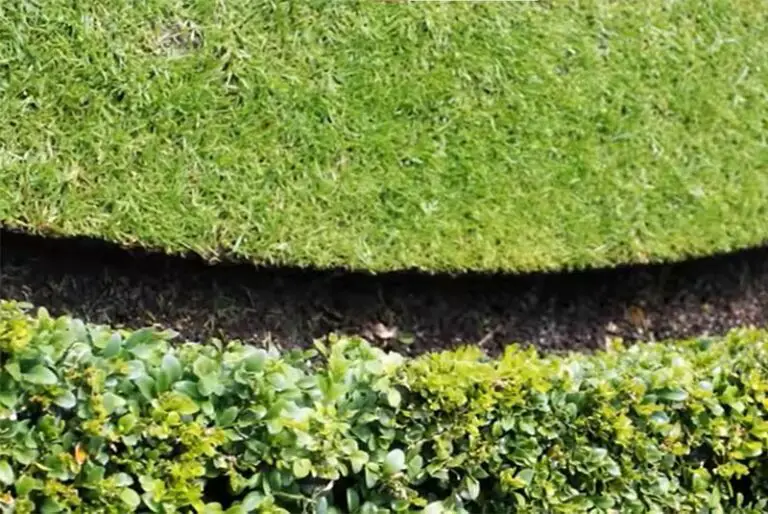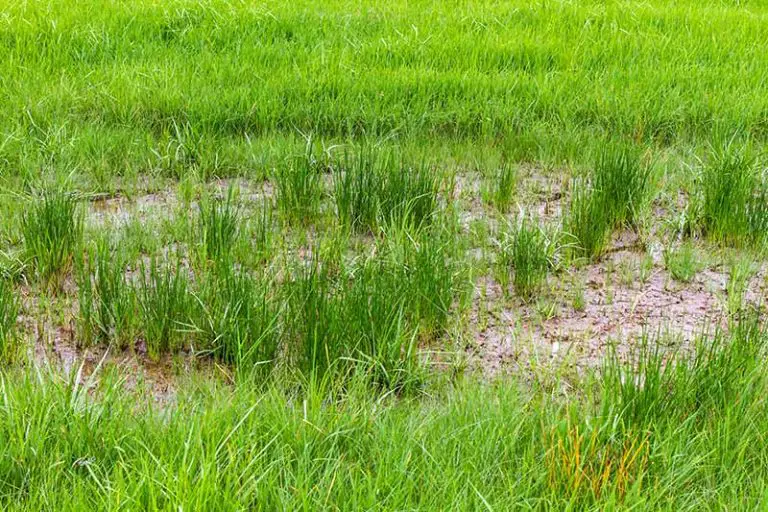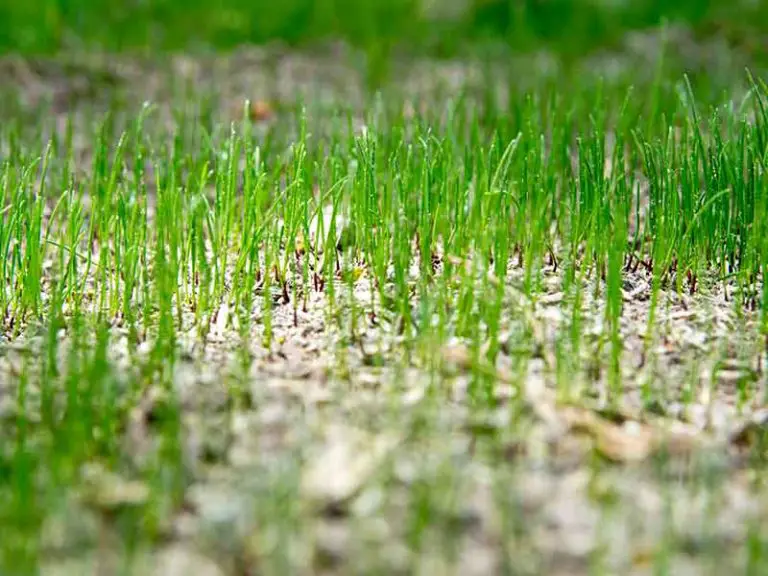5 Alternatives to Straw for Grass Seed Covering
Using straw to cover grass seed is a common practice among homeowners. Although it’s a popular choice, straw is not the only material you can use as a grass seed cover. There are several other all-natural alternatives to straw that will provide similar benefits when used as mulch on newly sown grass seed.
The best alternatives to straw for grass seed include compost, grass clippings, sawdust, peat moss, and pine straw. All of these materials make effective organic mulches that will work to cover grass seed after seeding or overseeding your lawn.
Why is it Important to Cover Grass Seed?
It’s important to cover grass seed to protect your new grass during its most delicate stages of growth. While grass seed can grow uncovered, it is much more vulnerable to external conditions that may impact it during germination. Covering the seed will ensure that all of your seedlings have the best chance of successful germination and establishment.
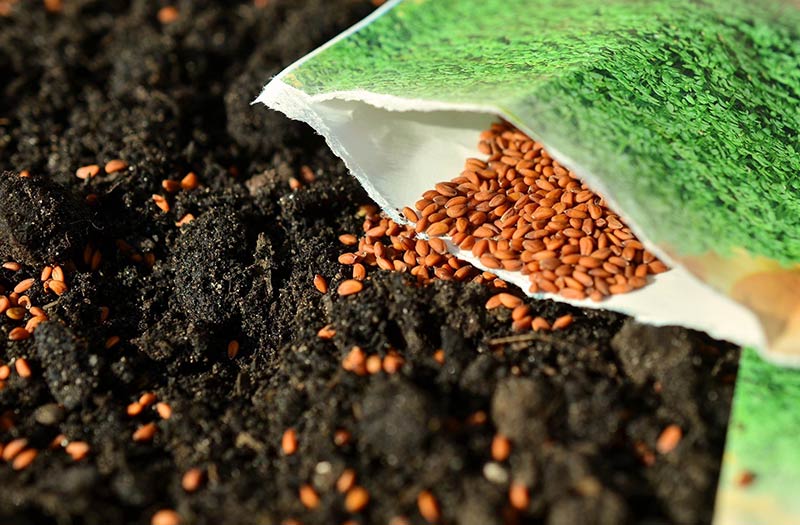
Left uncovered, newly sown grass seed is highly vulnerable to being lost to the elements. For instance, your grass seed could be washed or blown away, affected by temperature fluctuations, or eaten by birds. You can protect your seed against all of these conditions by adding a thin layer of a suitable mulching material to the planting area.
Using a layer of mulch to cover grass seed will provide your new lawn with a host of additional benefits. A mulch layer helps the soil to retain moisture and maintains a stable temperature in the turf; it also prevents weed growth in the area by blocking sunlight from reaching the invasive growth. In summary, covering grass seed is essential to create the ideal conditions for your new grass to germinate and establish itself.
Do You Have to Put Straw Over Grass Seed?
While it is a highly effective mulching material, you don’t have to put straw over grass seed. There are several alternatives to straw for grass seed coverage which we detail in the following section.
With that said, if it’s an option, you should still consider the benefits of using straw to cover grass seed:
- The straw will protect your grass seed from being washed away by water or blown away in the wind.
- A straw layer will protect your grass seed from excessive sunlight.
- Your grass seed is less likely to be eaten by birds or other wildlife as the straw creates a visual and physical barrier.
- As it decomposes, the straw will act like a slow-release fertilizer, adding organic matter and nutrients to the soil.
Despite its benefits, straw is not the be-all and end-all of mulching materials to cover new grass. There are many other suitable mulching materials that can achieve all of the same benefits as straw when used as a grass seed covering.

Best Alternatives to Straw for Grass Seed
The most common materials used as an alternative to straw for grass seed include compost, grass clippings, sawdust, peat moss, and pine straw. In the following sections, we discuss each of these straw alternatives and how to apply them to your grass seed.
1. Covering Grass Seed with Compost
Compost is one of the best mulching materials you can use to cover grass seed as an alternative to straw. In addition to being an effective mulch, compost will add a host of nutrients and live organisms to your soil.
In terms of nutritional benefits, compost is the most valuable substance you could add to your new lawn. High-quality, well-decomposed compost contains nitrogen, phosphorus, and potassium, the three primary nutrients grass needs to grow. Compost will act like a slow-release fertilizer to release these nutrients into the soil gradually as it further decomposes. Using compost to cover grass seed will therefore reduce the long-term fertilization requirements of your new grass.
If you don’t already have one, start a compost pile, make a compost bin, or use a tumbler to begin making your own compost at home. There are a number of materials you can add to your compost; these include fruit and vegetables, grass clippings, dead leaves, shredded paper, wood chips, and ashes. You can alternatively purchase some high-quality compost from a reputable brand if you don’t have the means for home composting.
It’s important to use well-aged compost as adding organic matter that is yet to fully decompose may cause your grass seed to rot. Before adding the compost to your lawn, you must also pass it through a fine screen; without screening, the compost can clump and suffocate your grass seed. Add the compost to your lawn in a layer no thicker than ⅛ to ¼ inch.
2. Using Grass Clippings to Cover Grass Seed
Grass clippings are an extremely eco-friendly alternative to straw for grass seed and other general mulching purposes in your yard. Using them as mulch is one of the many ways you can reuse grass clippings and reduce your yard waste.
A particular advantage of using grass clippings to cover grass seed is the nitrogen content in this mulching material. Grass clippings contain a high amount of nitrogen, one of the most important nutrients needed by grass plants. As the grass clippings break down, they will release a boost of nitrogen into the soil.
Grass clippings are also completely free and you can harvest them yourself during your usual lawn maintenance. The easiest way to collect grass clippings is to use a bagging attachment on your mower; this will catch and collect the clippings for you as you mow your lawn. If you don’t have a suitable attachment, you can instead use a rake to gather up the clippings after mowing. As a note, avoid using your grass clippings as mulch if you’ve recently used any chemical treatments on your lawn.
3. Using Sawdust to Cover Grass Seed
Another common alternative to straw for grass seed is sawdust. Sawdust creates a fine layer of mulch that will keep your seed in place and protect it from drying out. As an amendment, this material is less biologically valuable than compost, but equally as valuable as peat moss.
Although it has little nutritional value, sawdust is a great substance to add bulk to your grass seed. This straw alternative will ensure an even distribution of seeds that are protected from the wind and rain. You can also use sawdust to loosen hard soil by working it into the turf. As the sawdust particles are smaller than straw, this mulching material is better able to retain moisture in the soil.
However, take note that sawdust can hold onto too much water if you apply it in too thick a layer. The fine particles can form a barrier that prevents moisture in the underlying soil from evaporating; this can cause fungal growth in the soil and root death of your grass. To avoid triggering this smothering effect, apply the sawdust to your lawn in a layer no more than ¼ inch thick. If you want a thicker layer, you will need to mix the sawdust with sand, peat, or larger pieces of wood to maintain aeration in the soil.
4. Using Peat Moss Over Grass Seed
Peat moss is often used as a soil amendment to improve growing conditions in poor-quality soils. This substance can also serve as an alternative to straw for grass seed mulching.
A layer of peat moss will protect your grass seed from adverse external conditions, being particularly effective in preventing birds from eating the seed. This substance performs best in lawns with low humidity, little wind, and no heavy rain forecast for the following weeks. Although peat moss doesn’t help with compaction, it will provide the soil with nutrients as it decomposes.
Again, peat moss is a substance that may smother your grass seed if applied in too thick a layer. Avoid applying a layer of over ¼ inch thick; a layer of peat moss that exceeds this thickness will immediately soak up any water from rainfall or irrigation. You must also loosen peat moss by hand before using it to break it up from its naturally dense state. Following this advice, the peat moss will be aerated enough to allow water to move through its fibrous structure.
5. Using Pine Straw to Cover Grass Seed
Pine straw is a similar mulching material to straw that you can use to cover grass seed. This material will allow sunlight to reach the soil while also enhancing the planting area’s moisture and heat retention.
Unlike straw, which you can use as soon as it’s harvested, you shouldn’t use fresh pine straw to cover grass seed. Fresh pine straw needles contain substances called terpenes that can inhibit the growth of young grass seedlings. You should instead use well-aged pine straw; the pine straw needles should be brown and odorless, indicating the evaporation of the terpene chemicals.

